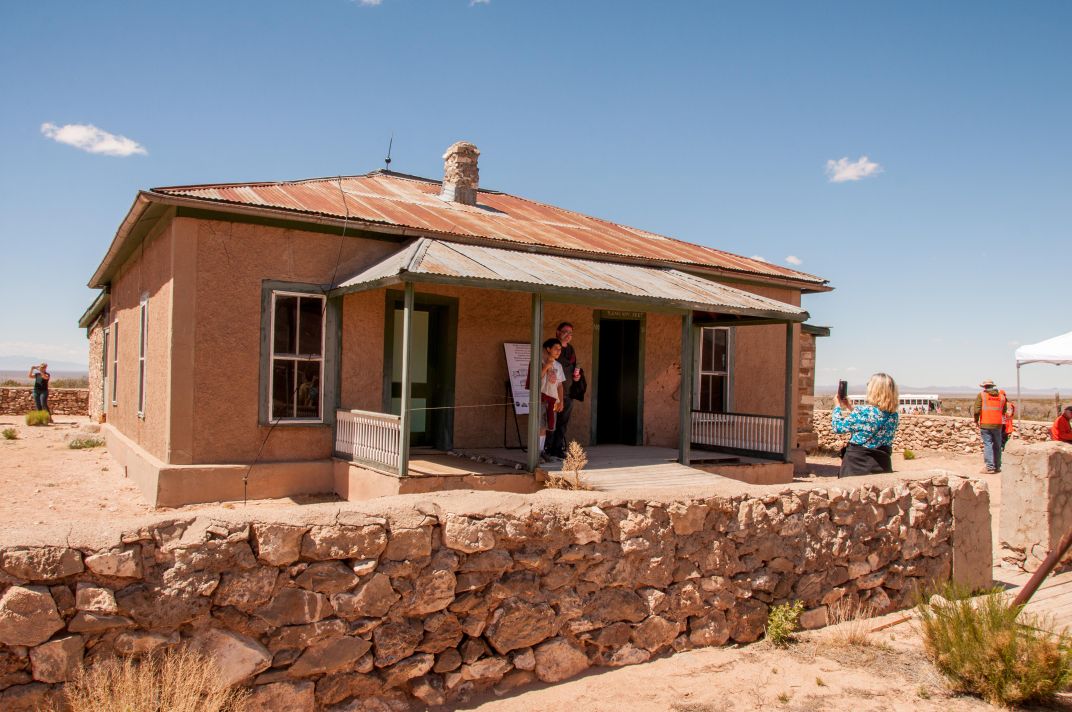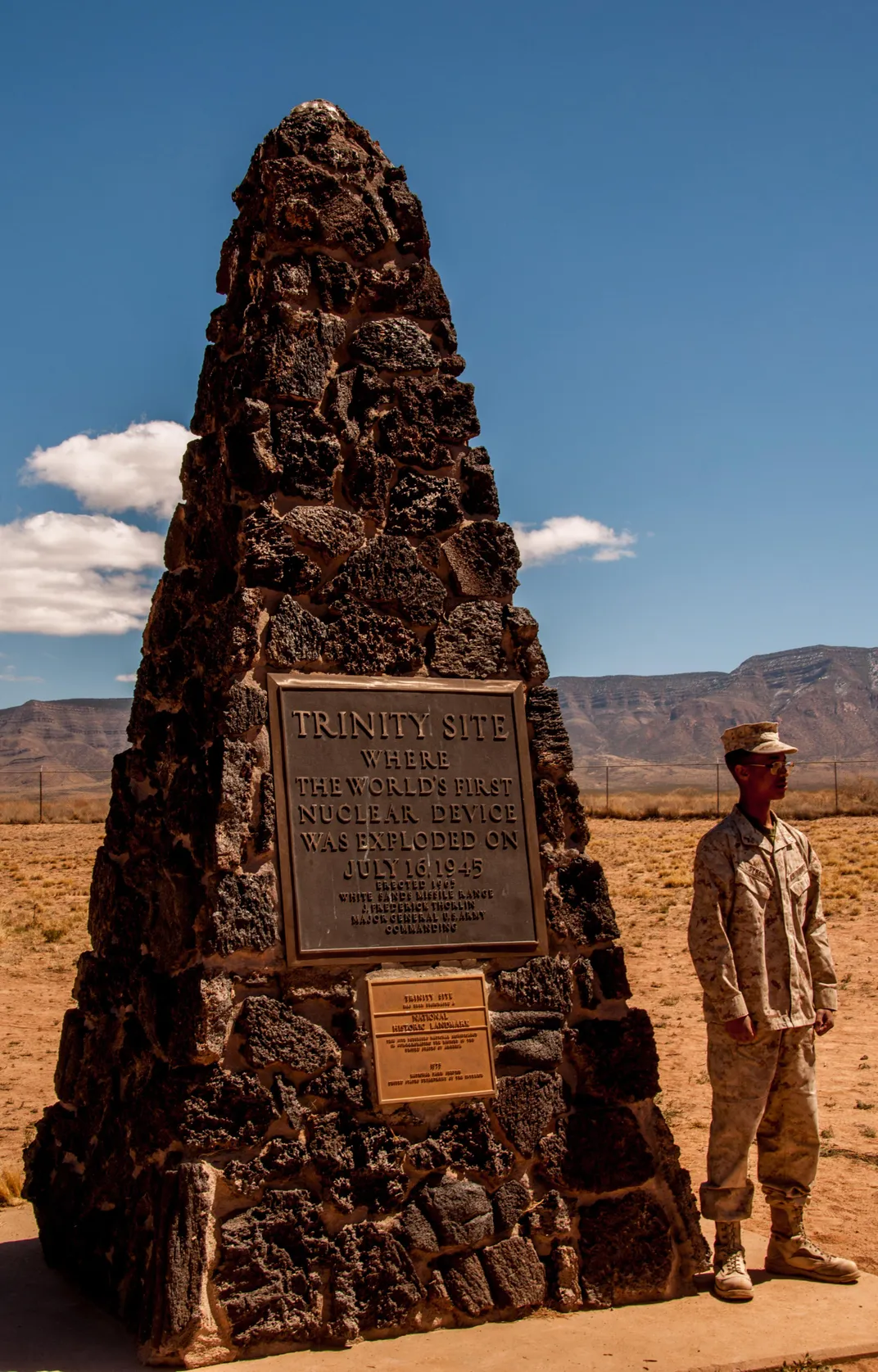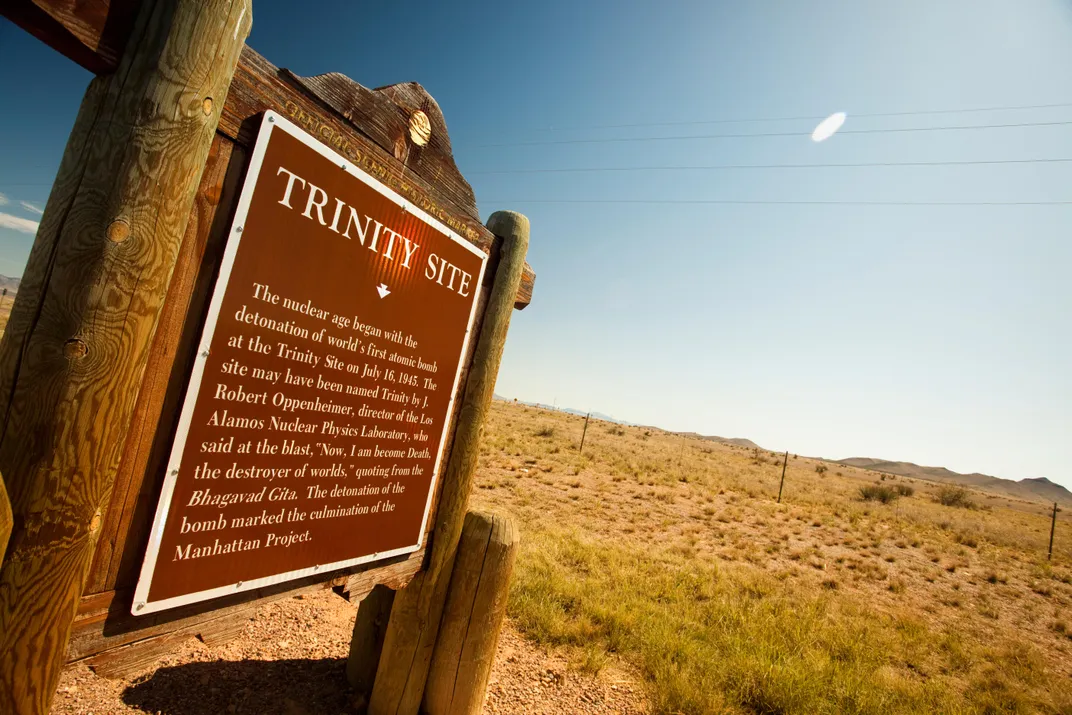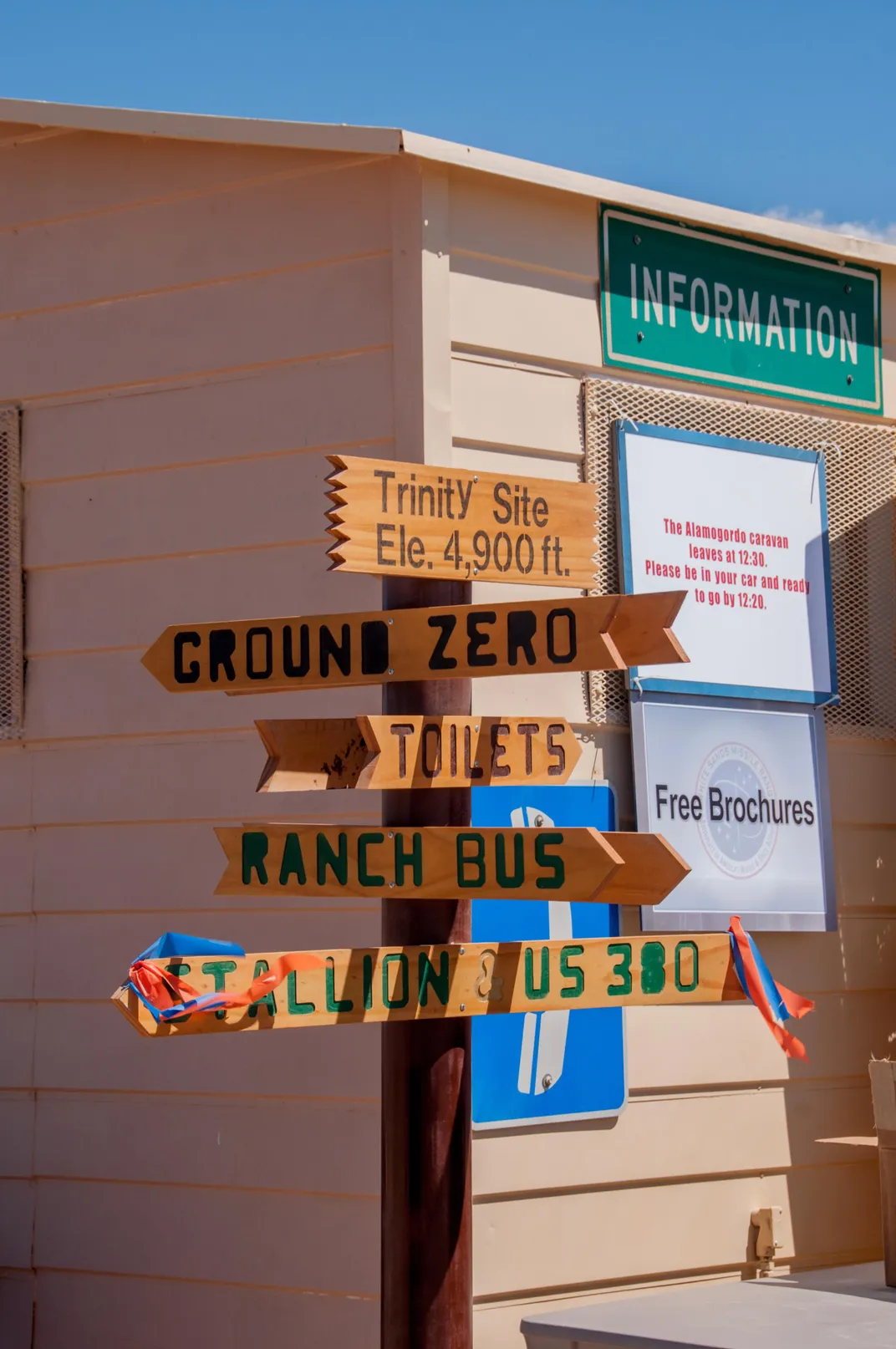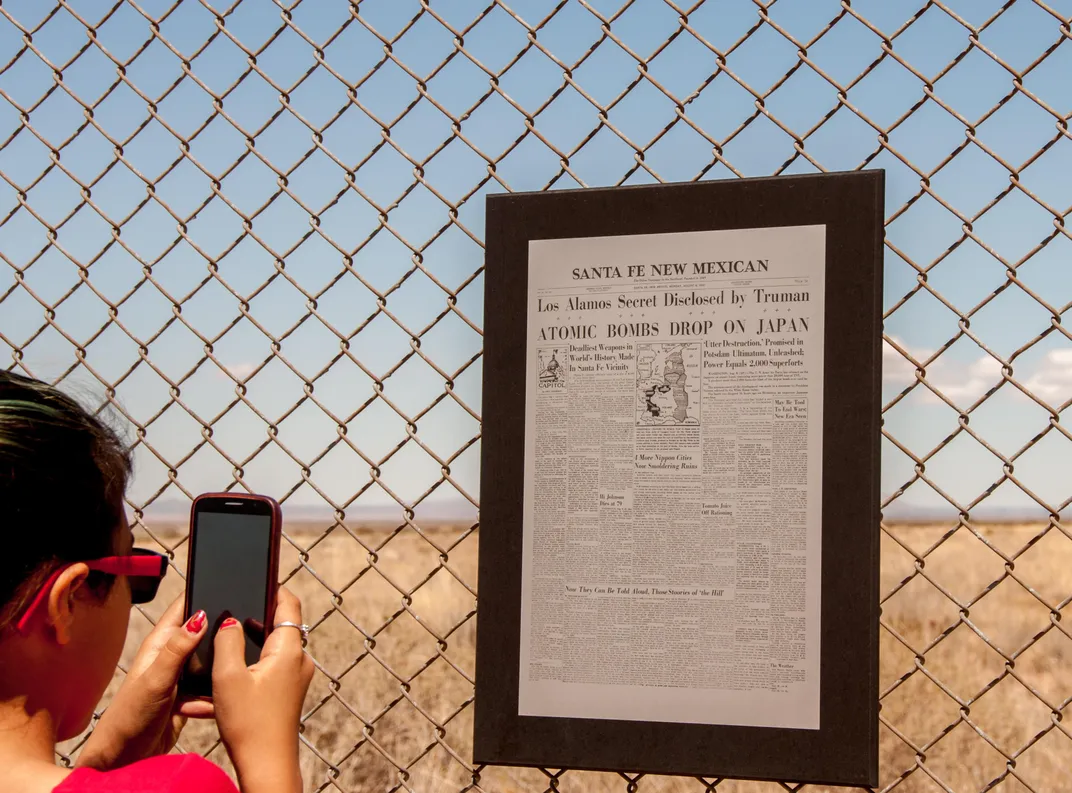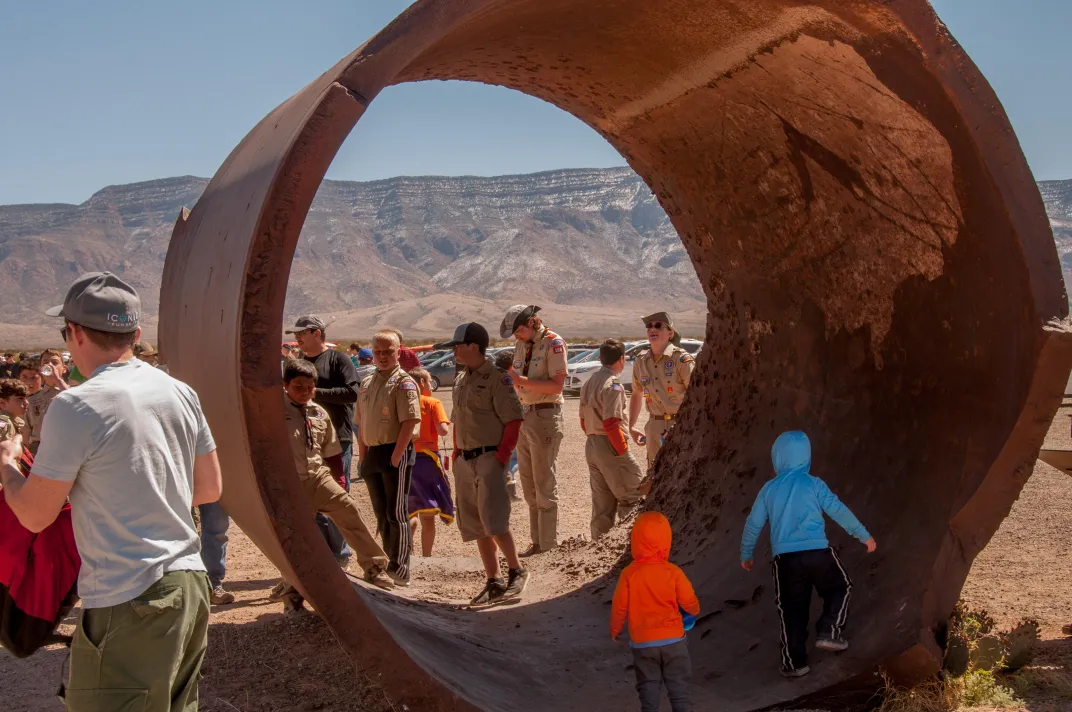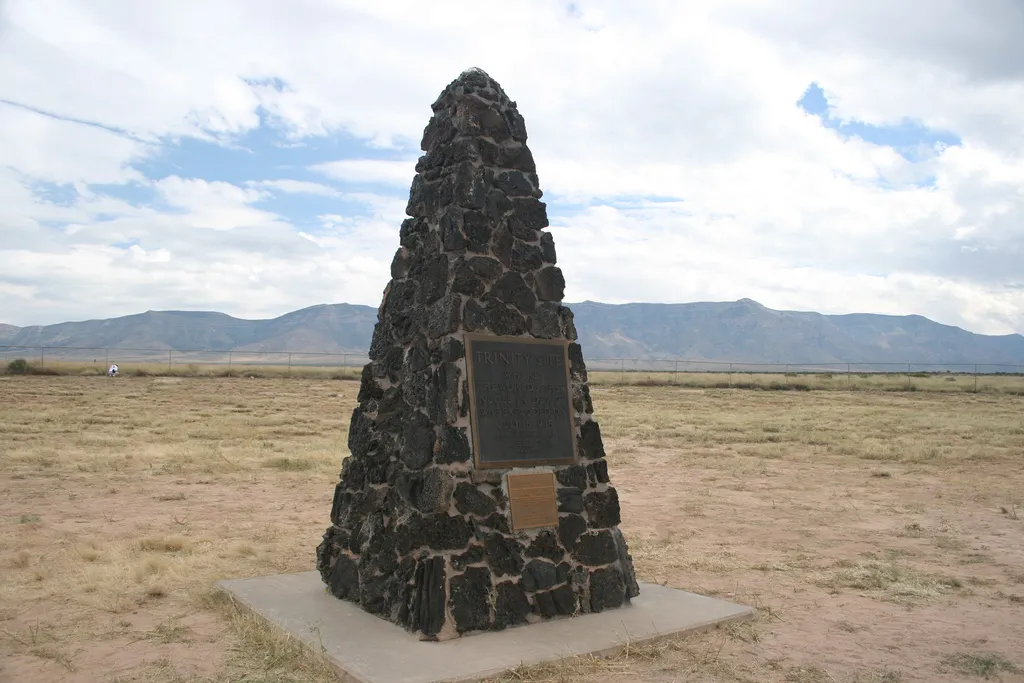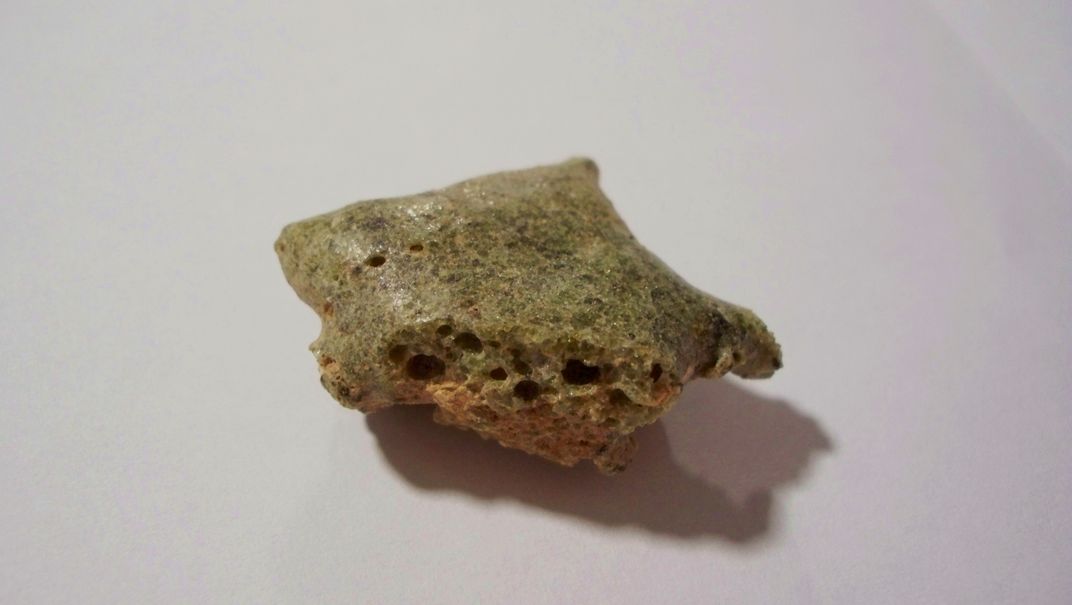Trinity Site Offers a Rare Chance to Visit Ground Zero of the World’s First Atomic Bomb Explosion
The detonation site is only open to civilians twice a year
:focal(994x575:995x576)/https://tf-cmsv2-smithsonianmag-media.s3.amazonaws.com/filer/34/79/34795f66-d57c-43f5-9756-92cca19620b5/32484456194_ab310c6193_k.jpg)
July 16, 1945 was a day that changed the world forever. At 5:29 a.m. Mountain War Time, just minutes before sunrise, the night sky above central New Mexico was illuminated in a brilliant fireball of white light as the U.S. military tested the world’s first atomic bomb. Called Trinity Site and located on the grounds of the White Sands Missile Range about 70 miles west of Alamogordo, the site is typically off limits to civilians—but on October 7, visitors can experience it firsthand during its biannual open house.
Held on the first Saturday of every April and October, the open house is the only opportunity the public has to access the missile range, which normally serves as an active site for the U.S. Army to test out new weaponry. During the open house, visitors can see ground zero, where the plutonium-based A-bomb was detonated more than 70 years ago as part of the Manhattan Project. The open house also includes a visit to the McDonald Ranch House, a 1913 adobe home built by Frank Schmidt, a German immigrant, and where the device’s plutonium core was assembled.
Today, a monolith marks ground zero along with what’s left of the footing of a 100-foot tower that military personnel used during the detonation. Also on view: photos taken during the explosion, and the leftover bomb casing from “Fat Man.”
“Most of the tower was vaporized during the explosion,” Drew Hamilton, a public information and community relations specialist for White Sands Missile Range, tells Smithsonian.com. “Since the explosion, much of the surrounding area has more or less returned to the way it would naturally be. There are no bushes growing around ground zero, but it’s because we regularly mow it. If we didn’t, it would look like the rest of the landscape.”
Visitors may also come across crumb-size pieces of Trinitite, a rock-like byproduct leftover from the explosion known for its glassy texture and deep green hue. (Since White Sands is a national monument, however, visitors are prohibited from removing anything from the site.)
And while Trinity Site has been cleaned up since the atom bomb detonation, its radiation levels remain above that of naturally occurring background levels. To put this into perspective, Hamilton gives the following example:
“Radiation is everywhere, it’s a naturally occurring phenomenon,” he says. “But it’s a little bit higher [at Trinity Site as compared to] the surrounding territory. During a one-hour visit, you’ll be exposed to approximately half a millirem of radiation. In comparison, during a flight aboard a commercial airliner from New York City to Los Angeles, you’ll be exposed to 2 millirems. You’ll get the same exposure from the Trinity Site as you would if you ate eight bananas, which, because of their potassium content, are naturally radioactive.”
This year’s Trinity Site open house will take place from 8 a.m. to 2 p.m. on October 7. Admission is free and reservations are not required. Pets are allowed and must be leashed. To reach Trinity Site, take exit 139 off Interstate 25 to State Highway 380 and drive east 12 miles to Stallion Gate. Make sure to bring a valid ID to show at security checkpoints. Drivers should be prepared to provide proof of insurance.
/https://tf-cmsv2-smithsonianmag-media.s3.amazonaws.com/filer/34/79/34795f66-d57c-43f5-9756-92cca19620b5/32484456194_ab310c6193_k.jpg)
/https://tf-cmsv2-smithsonianmag-media.s3.amazonaws.com/filer/23/5b/235b206d-2366-42b4-91ee-a9e3b3af31c9/32513209993_d3d9059f8f_k.jpg)
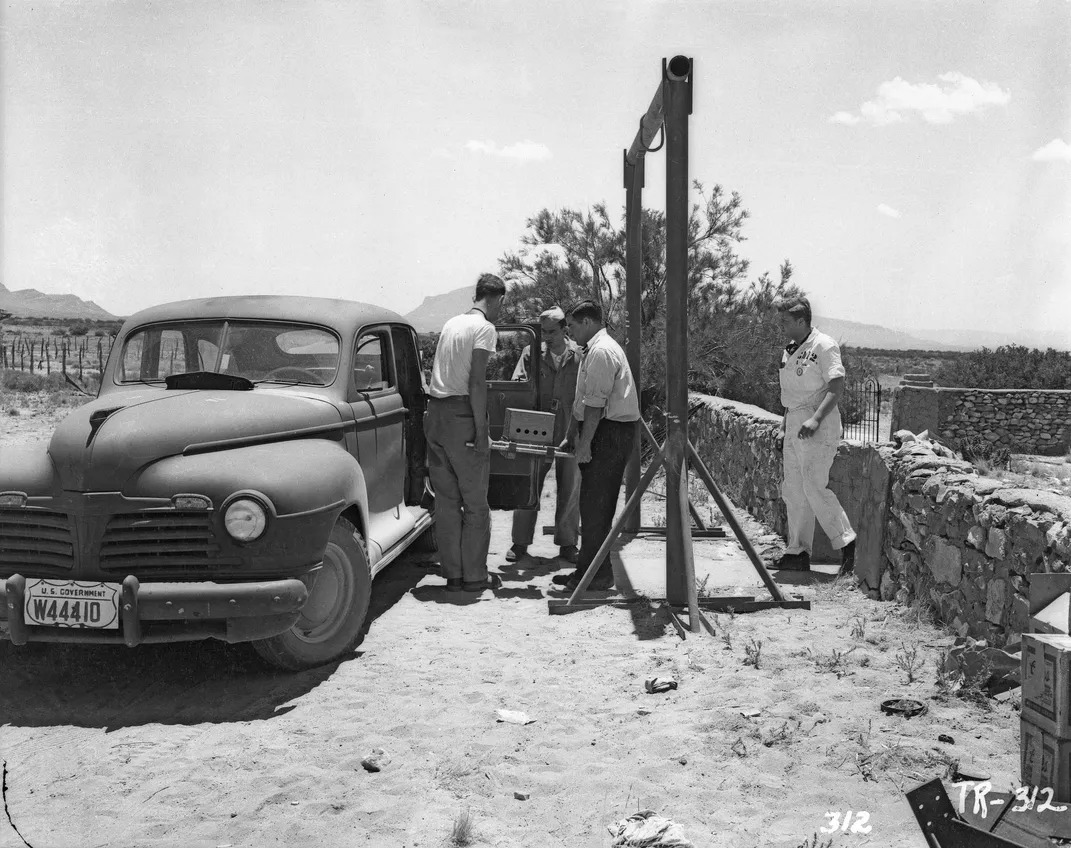
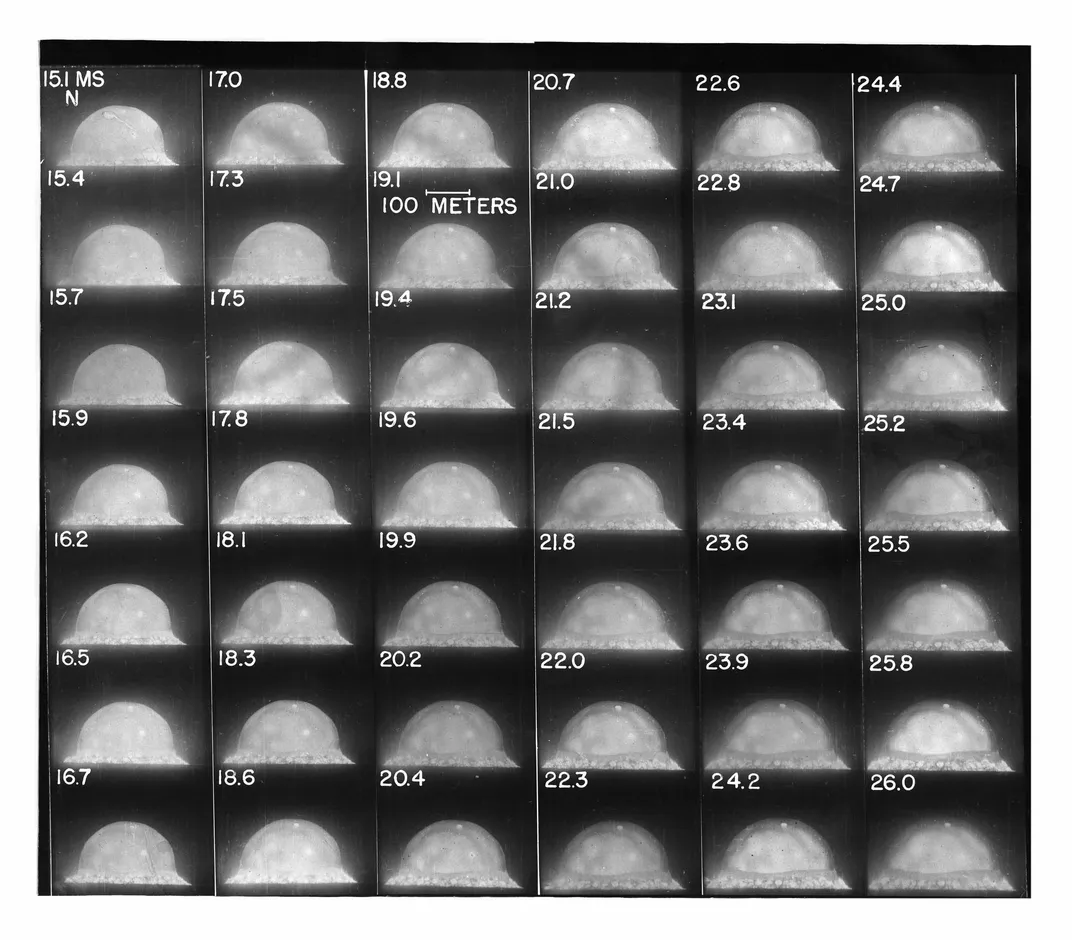
/https://tf-cmsv2-smithsonianmag-media.s3.amazonaws.com/filer/45/c7/45c78a79-e41d-4194-852b-dde35f70b943/32944894280_751c642ec5_k.jpg)
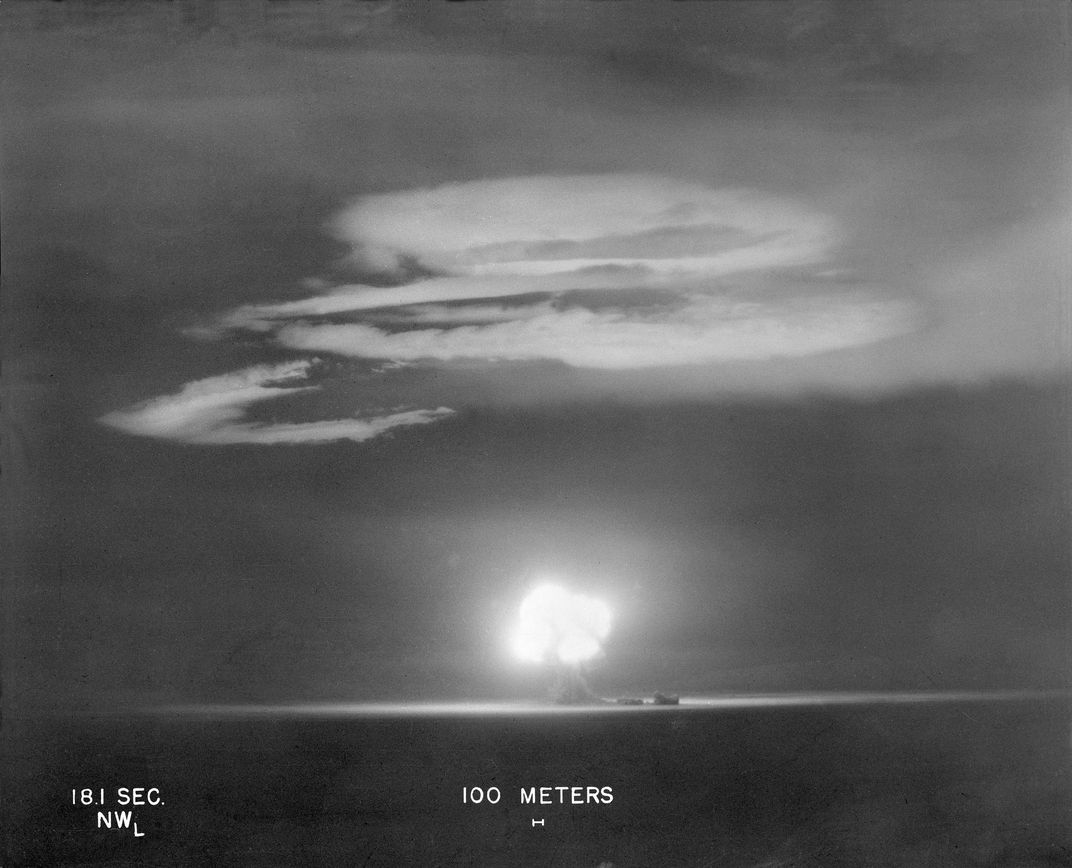
/https://tf-cmsv2-smithsonianmag-media.s3.amazonaws.com/filer/09/62/0962d3e3-c269-4f55-8093-f7ea42fbab9b/33474864050_c5565beeda_k.jpg)
